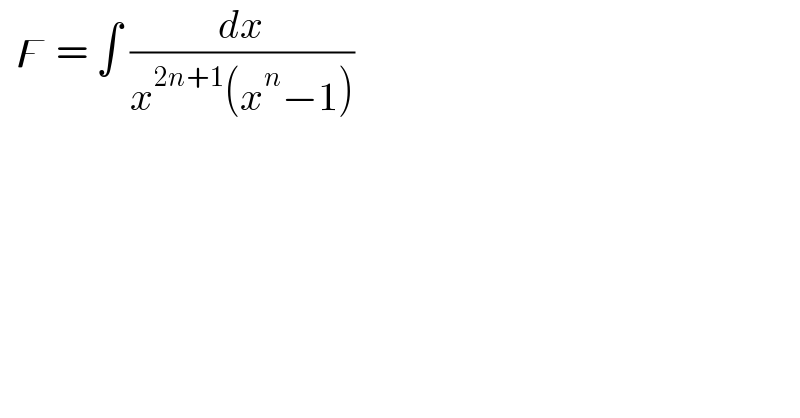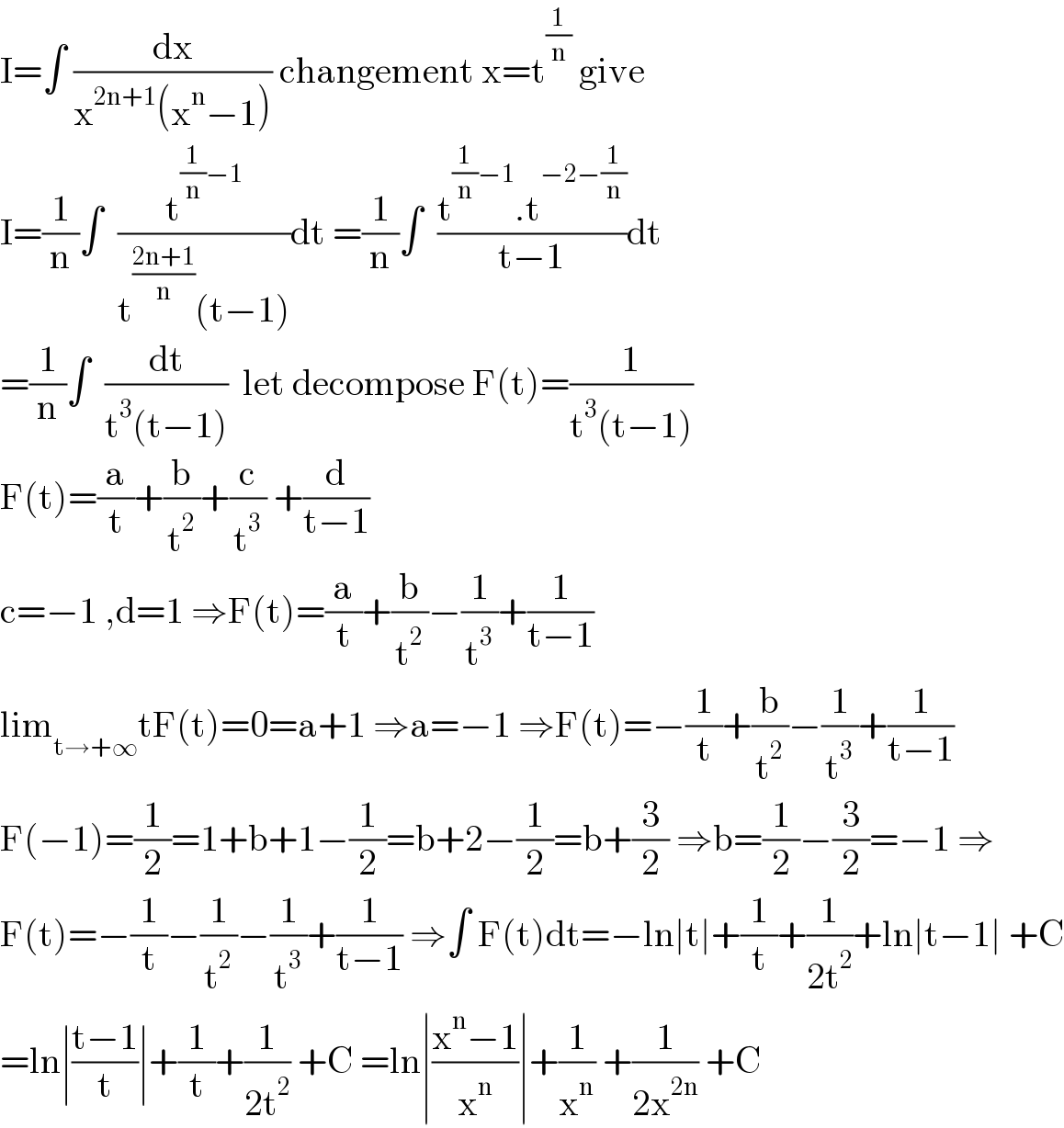
Question and Answers Forum
Question Number 129646 by liberty last updated on 17/Jan/21

Answered by TheSupreme last updated on 17/Jan/21
![x^n =t x=t^(1/n) x^(2n+1) =t^(2+(1/n)) dx=(1/n)t^((1/n)−1) dt ∫(((1/n)t^((1/n)−1) )/(t^(2+(1/n)) (t−1)))=∫(1/n) (1/(t^3 (t−1)))dt ((At^2 +Bt+C)/t^3 )+(D/(t−1))=(1/D) { (((t^3 ) A+D=0)),(((t^2 ) B−A=0)),(((t) −B+C=0)),(((1) −C=1)) :} F=(1/n)∫−((t^2 +t+1)/t^3 )+(1/(t−1)) dt F=(1/n)∫−(1/t)−(1/t^2 )−(1/t^3 )+(1/(t−1))dt F=(1/n)[−log(t)+(1/t)+(1/(2t^2 ))+log(t−1)+c] F=(1/n)log((x^n −1)/x^n ) +(1/x^n )+(1/(2x^(2n) ))+c](Q129652.png)
Answered by liberty last updated on 17/Jan/21
![ϝ = −(1/(2n)) ∫ (1/(x^n −1)) d((1/x^(2n) )) ϝ = −(1/(2n))∫ ((1/x^n )/(1−(1/x^n ))) d((1/x^(2n) )) let (1/x^n ) = r ⇒r^2 = (1/x^(2n) ) ∧ 2r dr = d((1/x^(2n) )) ϝ = −(1/(2n))∫ (r/(1−r)) (2r dr ) ϝ = −(1/n)∫ ((1−(1−r^2 ))/(1−r)) dr ϝ = (1/n) [ ln ∣1−r∣ +∫ (1+r) dr ] ϝ = (1/n) [ ln ∣1−(1/x^n )∣+(1/x^n )+(1/(2x^(2n) )) ] + C](Q129658.png)
Answered by mathmax by abdo last updated on 17/Jan/21

Commented by mathmax by abdo last updated on 17/Jan/21

